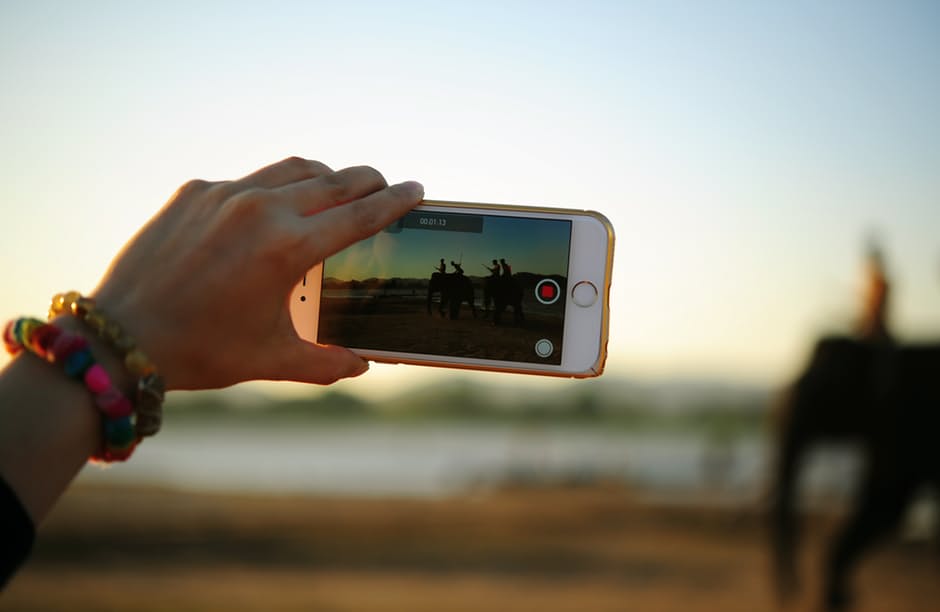NewsWhip rounded up opinions from social media leaders at news sites and PR firms to see how they use different platforms and content formats to effectively reach audiences.
NewsWhip constantly talks to, and learns from, leading social media experts in publishing and PR.
Over the past few months, the company has talked to the likes of Nissan, CNN, CBS Sports and more. In the fast-moving space that is social distribution, NewsWhip has learned lots about what to focus efforts on, and how to measure the impact of their work on social media.
Below is a compilation of a selection of responses and opinions.
Using new social media platforms for audience building

Marshall Manson, Ogilvy PR UK: Broadly what I would say is Facebook is still dominant. In some cases, it’s the most advertiser friendly. There’s some rationale for that.
I think over time, I’m as or more interested in other platforms. I’m as or more interested in things like Instagram, which is growing like crazy, with a slightly different type of audience. I’m interested in Facebook Messenger, and some of the stuff they’re doing there. I’m interested in Snapchat because it’s young, and that interests our clients.
The key challenge for us is to keep on top of those things and make the most of any platform for any particular opportunity.
Leigh Silver, Odyssey: Publishers need to realise that it is a multi-platform world, and if you’re not competing on all platforms, you’re going to fail. I really do believe that. You have to be able to survive on all platforms.
Samantha Barry, CNN: Not only do platforms move really fast, audience behaviour moves really fast. You have these platforms evolving in the way people consume content. You also have audience behaviour evolving. That’s why we’re in messaging apps – we want to learn about how people share content in those worlds. We’ve seen the growth of people sharing in dark social and messaging apps. We want to be there because that’s where audiences are sharing news and content.
Using video on social media

Thomas Seymat, Euronews: We have published over thirty 360° videos on Facebook since February 2016. The audience results have been a bit mixed. That’s a natural part of the learning process as we establish what works and what doesn’t. We didn’t really expect that the simple act of publishing 360 videos would be enough, we knew that we would have to develop the right forms to have an impact.
Nevertheless, some videos have worked really well, and we did not hesitate to boost these posts to leverage their success. On the longer term, now that we have a better idea of what works, it’s a matter of fine-tuning the videos, but also of the posts that accompany them.
Samantha Barry, CNN: We’re in a very lucky position with video. CNN is the leader in video news, and we have this broadcasting beast domestically and internationally. Video has been a big focus for us, and you’ve seen that on our pages, where not only have we upped the amount of native video we’re uploading, but we’ve gone all-in on Facebook Live as well. It’s been amazing for us so far.
One of the things we don’t want to do on Facebook Live is it to be TV-lite. We do TV really well – on TV. We want Facebook Live to be something different.
Eric Kay, CBS Sports: The beauty of caption-based video content that plays well on Facebook is it’s actually really beneficial for a lot of our needs.
So there are efficiencies there in that we can make a fun and informative video that plays well out of the gate of a high-interest news event and distribute it throughout not just social platforms, but our website and app as well. That gives us time to produce additional content, whether it be videos with expert analysts, reporters on the scene, highlight packages or other video experiences that meet fans’ needs.
Measuring impact and success
Marshall Manson, Ogilvy PR UK: It hugely depends on the client, and who their audience is. For our airline client, we can track right through to conversion — right through to the point where someone’s clicking buy. For other clients, the game is much more about building brand and having people love brands so they’ll buy more in the shops. There, we have to track different metrics.
Eric Kay, CBS Sports: We definitely look at a combination (of metrics) but I spend a lot of time looking at referrals and we’re focusing a lot on repeat visitors with loyalty in mind.
A lot of what we produce isn’t designed to chew up your entire lunch break. Punchy, entertaining/informative articles about trending topics, and thoughtfully done chunky content that’s team-based and easy for fans to find their team’s blurb are two ways in which we gear content for fans’ social feeds. They’re ways for us to signal to fans that we know you’re time-strapped.
And finally, the importance of moving fast

Samantha Barry, CNN: (This is) where I see newsrooms and journalists fail. Maybe they have one social platform that they’ve been on since they’ve been a journalist, and they never explore others. Even as a journalist, you should be lurking on a lot of these apps. You should understand what Kik is, or how Snapchat Stories work. Or you should understand how people now get information on Instagram Stories.
You always need to be willing to iterate and try new things on social. And some of them won’t work. In the social world more than anywhere else across legacy media organisations, it’s ok to fail, but fail fast.
Source: NewsWhip
Boost your social media strategy with the help of the digital marketing experts today.




